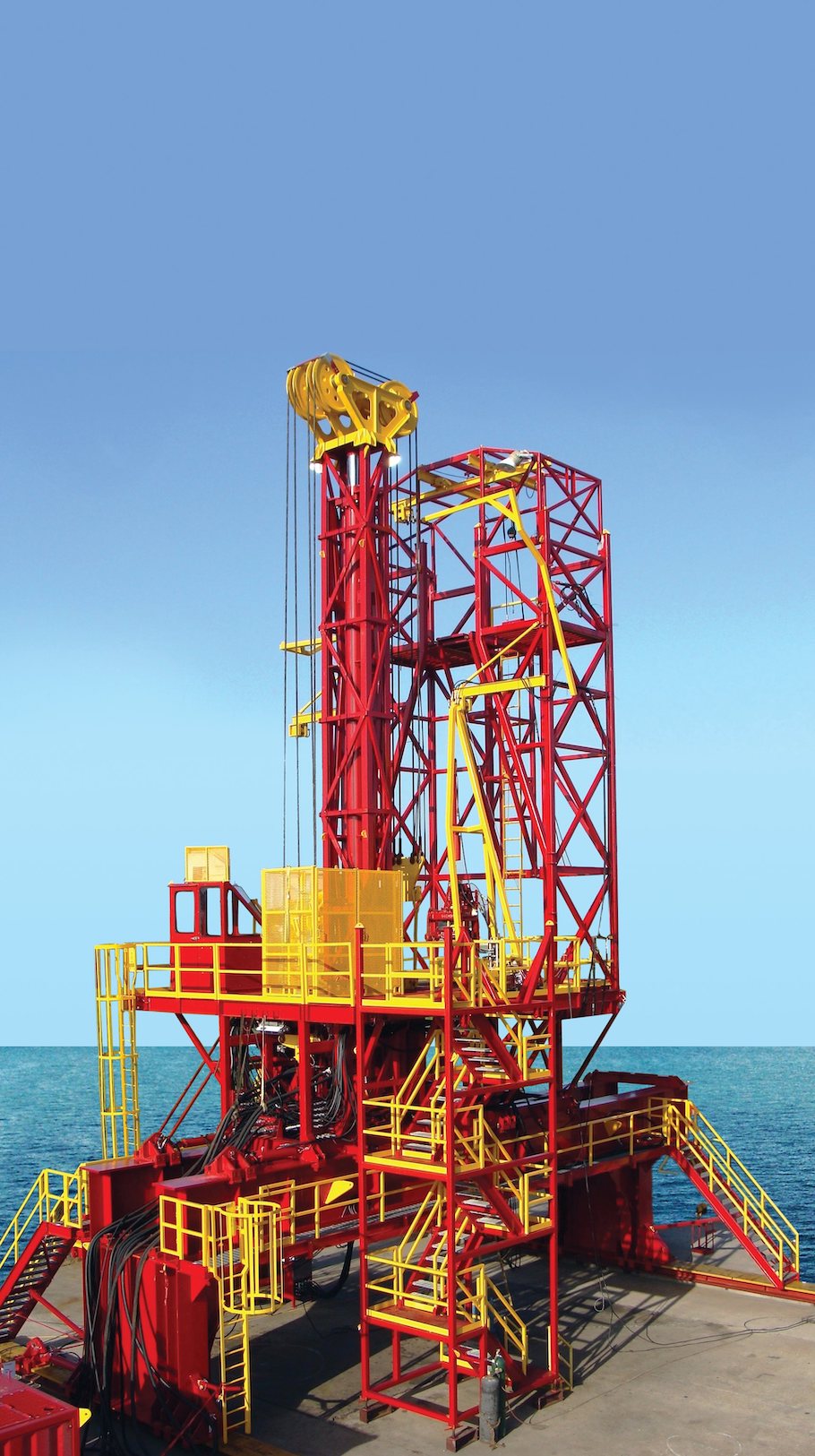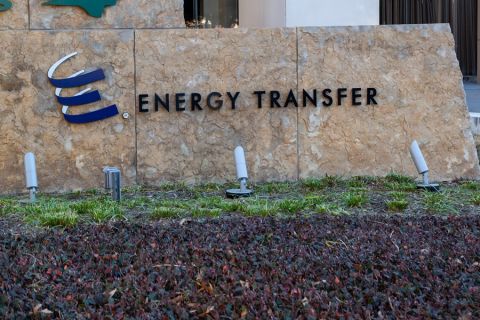Presented by:

Editor's note: This article appears in the E&P newsletter. Subscribe here.
Over the past decade, decommissioning in the upstream oil and gas sector has undergone significant changes in terms of maturity of regulations, scopes and enablers. Colleagues who once avoided decommissioning projects are now gravitating toward them owing to the scale and scope of the challenges they face in the mature basins of the world. Public awareness and engagement in these operations have also contributed to a shift in the way asset retirement is perceived and engagement is conducted.
This pivot in the market poses the question, is decommissioning the end or an opportunity for evergreen innovation?
Technology gets significant focus in this area, and rightly so, the upstream sector has a strong tradition of technology firsts. Less focus is placed upon the enablement, which combined engineering, procurement and service contracts can deliver, in terms of environmental and financial impact. In many cases, the contracting approach enables otherwise complex and unachievable projects, and in some cases, they can be optimized to deliver ahead of schedule, reducing environmental risk.
New paradigms and optimizing existing ones
With the Oil and Gas UK reporting the wells scope in decommissioning projects accounting for 49% of the net cost, it is an area where there is acute project execution approach focus. Historically, project execution and commercial models have been areas to drive cost reduction across the oilfield services market. Commoditization and standardization have been viewed as key supply chain processes to maximize value.
However, the risk profile presented in well abandonment operations, when compared to well construction operations or production management, often results in large commoditized contracts with extensive coverage for outlier events and high expense. This presents an opportunity to innovate and evolve the commercial model to increase agility, collaboration and reduce the total cost of ownership. Although this approach may seem counterintuitive as it increases complexity, the engineering, procurement and services management (EPSm) model has achieved this.
EPSm Approach
The EPSm contract approach is an example of open innovation that delivers wells on a partial turnkey basis. When collaborating with an international operator, the intention was to pilot the EPSm method at the same time as managing risk to a practical level and integrating with existing, established service partners.
The core of the contracting approach was developed using extensive offset data and time-value analysis. Lump sum per well commercial terms covered 90% of the well operations, in an approach that balanced operational risk with reduced total cost of ownership. When operations deviated significantly from trends, the model reverted to a schedule of rates mechanism. Previously, these outlier events had been an obstacle to the adoption of a lump sum approach.
Another element of the EPSm approach is collaboration with established service providers, for example, when an operator has a long-term partner it wishes to retain. Developing and engineering the necessary interface management, safety systems bridging and operational risk management techniques to enable joint provision required an agile contracting approach that conventional engineering, procurement and construction (EPC) or engineering, procurement, construction, installation and commissioning (EPCIC) contracts can prohibit.
Optimization of resources is a key in driving continual gains in an integrated contract approach, and developing multiskilled well abandonment specialists helps to accomplish this. Multiskilling delivered flexibility to the project teams’ core abilities, which allowed each member to assist in adjacent operations. The result was a team that required fewer specialists at the well site and that was able to increase service quality at a reduced total cost.
The EPSm contract was piloted on a unique factory-type well abandonment project, with 64 wells abandoned in high-pace operations. The project team consisted of 50 people, 20 of whom were on the rig each day. The team delivered 11 different services, along with interfacing with four existing vendors on the rig. All 64 wells were delivered in just 38 days, with a best project duration of 6 hours per well and average duration of 8 hours 37 minutes per well.
In cases where outlier events occurred, these were addressed through a schedule of rates, with the equipment, process and planning in place to minimize the impact of these to the rig schedule.
All the wells were delivered safely and compliantly, after more than 8,300 hours of operating time at the well site, and with a 99.4% productivity level. From the subsurface perspective, the project isolated, with 100% well-barrier compliance, more than 600 primary reservoirs and two intermediate reservoirs in highly compartmentalized formations.
The contract approach also enabled capital efficiency, which resulted delivering the project 44% below the operator’s authorization for expenditure (AFE).
All of this presents a question, if operations can be executed with such a significant cost reduction below budget, then can well abandonment present an opportunity to unlock trapped cashflows from the operators’ balance sheet? If the answer is yes, then this is truly an evergreen innovation.
Bundled services approach
In lower volume and less complex project structures, a bundled services approach may be a more appropriate strategy to create value. This approach seeks to establish collaborative and commercial pillars in a variety of project applications using a smaller and more focused way when compared to the EPSm approach. Typically applied to operator-led or EPC-led projects, the lead contractor manages operations and subcontracts to a series of best-in-class service providers across the project.
In the U.K. Continental Shelf of the North Sea, a fully integrated well abandonment partner engaged Weatherford to provide some of its services to complement its own plug and abandonment capabilities. The project consisted of 13 wells, including seven oil producers and six gas-injection wells.
In addition to managing third-party service partners, the team assigned a dedicated project manager to oversee complex and sensitive wellbore operations. These operations included single-trip plug and section milling, casing recovery and wellbore cleanup services.
The multiskilled teams helped to significantly reduce personnel on board over the 13-month duration of the project in one of the most stringently legislated basins in the world. Overall, the synergies helped the customer to efficiently achieve its asset retirement objectives and delivered the wells 125 days ahead of schedule and at 35% under AFE. The project was executed incident free and with 98.9% productive time.
Alliance model
The alliance model is open innovation and collaboration, with the goal of creating a collective project group with the highest competence levels and execution capability. In this model, the operator applies its expertise in a specific well, the rig duty holder offers asset familiarity and demonstrated safety in operations, and the service provider contributes the most appropriate best-in-class well services.
This approach was developed with an operator and duty holder to abandon an impaired wellbore in the central North Sea area. The offshore, fixed-platform oil producer had a 30-inch conductor with multiple structural issues, which required a unique engineered approach to safely recover the well slot and avoid structural damage to the tieback infrastructure at the seabed.
With safety being paramount, extensive collaborative engineering and risk management techniques were employed during the planning phase based on the combined experience of the alliance partners. As part of this multiskilled training, the duty holder and service provider teams were hosted at the Weatherford test rig to increase competence and optimize the project headcount.
The alliance model successfully delivered a complex project seven days earlier than planned with 100% productivity. The project was capitally efficient and delivered 28% under the AFE. Increasing competence improved the agility of the team and enabled safely finishing with no recordable incidents.
Evergreen horizons
With a variety of contracting approaches and commercial models developed specifically to enhance the safety of operations and the compliance of well barriers, how can the industry innovate beyond this to decarbonize operations in the oil and gas sector? With increasing stakeholder awareness of decommissioning operations, and an increasing obligation to return the well site to a pre-explored state, where does the industry now innovate?
Each of the cases presented has strong and positive environmental fundamentals. The EPSm case reduced the rig durations by more than 40%, which equates to 40% less fossil fuels burden by the support equipment and drilling rig and, in turn, reduces the carbon footprint while returning areas to pre-explored habitat. It also presents the opportunity to decrease the time wells are awaiting abandonment, which reduces the risk of integrity issues.

Beyond this, there are steps being taken to improve the environmental fundamentals in projects. A current EPSm project in progress in the Eastern Hemisphere is pioneering the latest innovations to decarbonize operations. It is a turnkey structure that is enabling an operator to safely execute Phase 3 well abandonment operations on the first of many aging facilities in a frontier location. A key component of this project is decarbonizing decommissioning. One tactic is changing the fundamentals of the project approach, using a rigless project structure instead of a drilling rig. This rigless approach has significantly smaller equipment, personnel and resource requirements when compared to a drilling-rig-based project, and it is further optimized by powering the prime energy consumption asset—a workover unit—electrically from existing facility power instead of burning fossil fuels.
This combined process, technology and paradigm innovation results in a significant carbon footprint reduction in the first of several evergreen EPSm projects, which seek to further decarbonize decommissioning.
The inherent elegance of innovation is, that by its very nature, it is evergreen. It always stimulates something new and different and never loses relevance, which makes the next 10 years of decommissioning development an exciting prospect.
About the author: Steven Allan Canny is Weatherford's Asia Geozone Business Manager with Integrated Services and Projects.
Recommended Reading
For Sale? Trans Mountain Pipeline Tentatively on the Market
2024-04-22 - Politics and tariffs may delay ownership transfer of the Trans Mountain Pipeline, which the Canadian government spent CA$34 billion to build.
Energy Transfer Announces Cash Distribution on Series I Units
2024-04-22 - Energy Transfer’s distribution will be payable May 15 to Series I unitholders of record by May 1.
Balticconnector Gas Pipeline Back in Operation After Damage
2024-04-22 - The Balticconnector subsea gas link between Estonia and Finland was severely damaged in October, hurting energy security and raising alarm bells in the wider region.
Wayangankar: Golden Era for US Natural Gas Storage – Version 2.0
2024-04-19 - While the current resurgence in gas storage is reminiscent of the 2000s —an era that saw ~400 Bcf of storage capacity additions — the market drivers providing the tailwinds today are drastically different from that cycle.
Ozark Gas Transmission’s Pipeline Supply Access Project in Service
2024-04-18 - Black Bear Transmission’s subsidiary Ozark Gas Transmission placed its supply access project in service on April 8, providing increased gas supply reliability for Ozark shippers.




